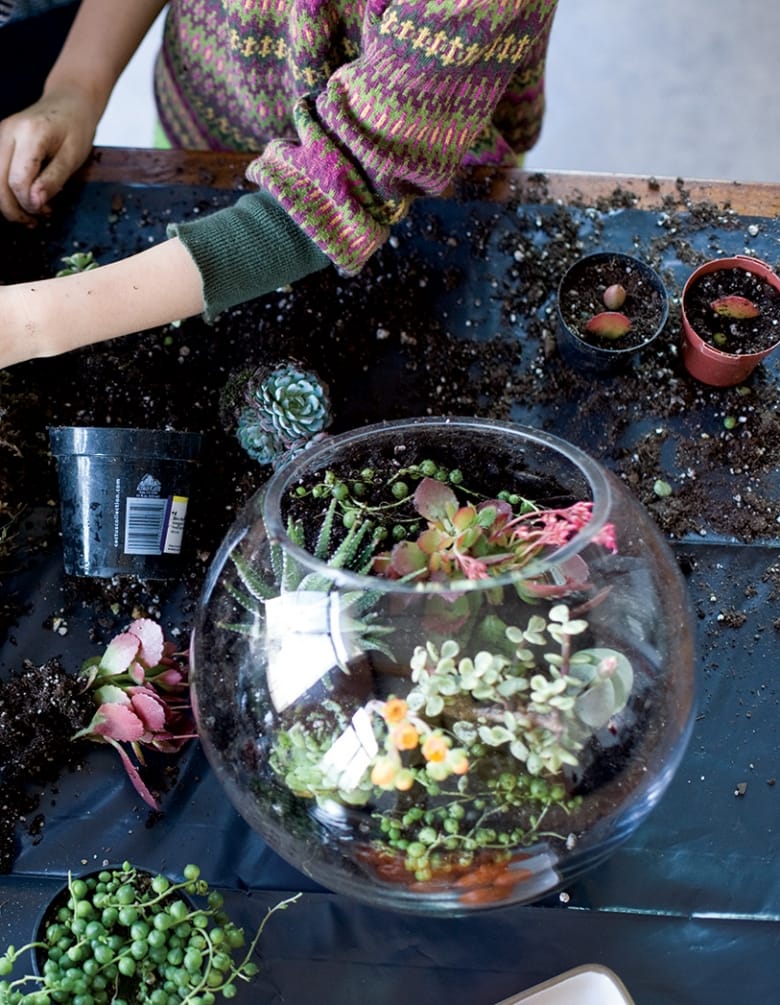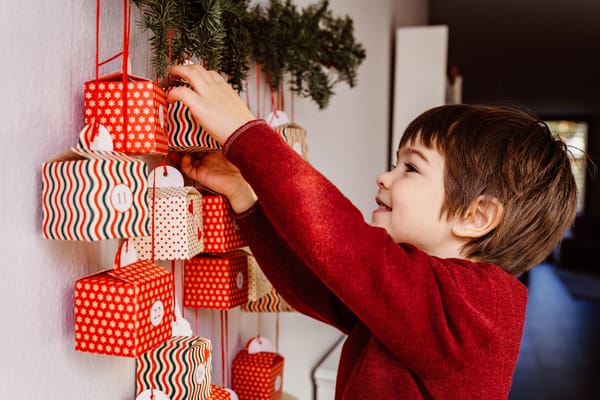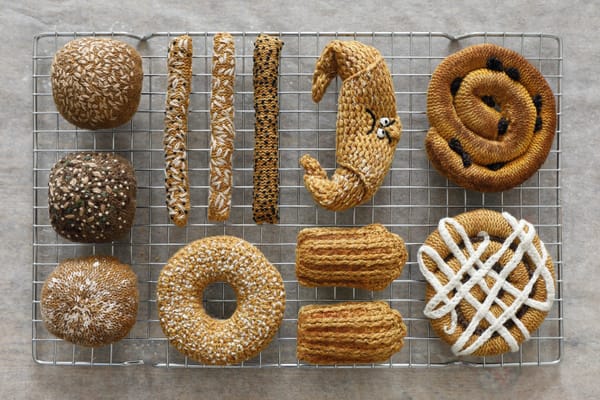A terrarium is a mini garden in a glass container. The plants are low maintenance and are perfect for those who don't have a garden or just don't have green fingers says Tsia Carson
One day, I noticed my daughter, Cedar, playing with a dollhouse, and I was inspired to make a terrarium—it was like a living dollhouse! Terrariums are a great way to help your kids understand landscape design and caretaking. The miniature scale really helps focus on how to develop composition. The instructions are detailed, but the project is really quite easy.
In our terrarium, we used about half a dozen succulents. My daughter chose which plants to use, and I helped a bit with the placement. She did most of the patting down of the dirt to settle the plants, and we both brushed the dirt off the leaves and the sides of the terrarium. Do not pack in too many plants; they will grow and need some room.
What you need:
- 10–20 succulent clippings or 5–10 succulent plants in 6cm pots; Plastic or waste paper to work on; Terrarium form, such as a goldfish bowl (the container must be open for succulents); Gravel or pebbles
- Activated charcoal; Succulent dirt; Mixing bowls; Spray bottle filled with water; Spoon; Brush; Medicine syringe
- Rooting hormone (optional)

GATHER YOUR SUCCULENTS
If you are using clippings from your own plants, give them a few days before planting them so they scab and roots begin to form. If you decide to order from a nursery or online, then look for plants sold in 3-6cm pots—anything larger will need more space than your terrarium can provide.
ACQUIRE A TERRARIUM
Succulents need plenty of air circulation to thrive, so you will want use an open container for your terrarium.
PREPARE THE MATERIALS
Try to predetermine the amount of gravel, charcoal, and potting mixture you will need to fill your terrarium. Place each of the planting materials in individual bowls that your kids can lift and pour from easily.
LAYERING THE TERRARIUM
Fill the terrarium with the first layer of material: gravel or pebbles, approximately 6cm thick to ensure proper drainage in your terrarium. This step is vitally important for succulents that do not like to be soggy.
Fill the terrarium with your second layer of material: activated charcoal, approximately 3cm thick. This layer helps the terrarium to stay fresh and clean by discouraging fungal and other plant diseases. Purchase activated charcoal at any pet store in the aquarium area.
Fill the terrarium with your third layer of material: succulent potting mix, approximately 6cm thick. This mix is where the succulents will grow. Add some water to your potting mix so that it holds together and becomes denser. Mix it outside your terrarium so that the potting mix you put in the terrarium is moist and suitable for planting. You may consider creating a mound in the middle or “back” of the terrarium to simulate a landscape. Tamp down the potting mix a bit with the back of a spoon.
READY FOR TRANSPLANT
If you are using cuttings, remove any leaves that will be below the dirt, leaving approximately 1cm stem. Taller specimens may need longer stems to balance. You may also consider using rooting hormone to encourage the plants to root (follow
the manufacturer’s directions). If you are using store-bought plants, you will want to take them out of their pots to make sure that their roots are wet (which makes them more pliable). You can spray the dirt and roots with a spray bottle of lukewarm water to moisten them. Gently aerate the roots by making pencil-sized holes throughout the dirt around them. Most plants will be root-bound, meaning that the roots have grown around and around inside the pot. These roots can be gently broken up to encourage the plants to grow new, healthier root systems.
PLACE YOUR SUCCULENTS IN THE TERRARIUM
This part is tricky. Pretend that you are creating a forest. Gently guide your child’s selection by placing the tallest specimens in the middle or back of the terrarium, the medium-sized ones in the mound or in front, and your ground-hugging variety along the edges where they can be seen. The point is to make all the succulents visible and give them their own room to shine.
PLANT THE SUCCULENTS
By looking at the size of the plant’s roots, you can figure out how big to make the hole. Make sure that the dirt around the plant is patted down to ensure good contact between the specimen and the potting mix. Use the medicine syringe to water precisely around your plant—not too much, though!
TAKE CARE OF YOUR TERRARIUM
Keep your terrarium out of very intense, direct sun because the glass magnifies and heats the sunlight, which can burn the plants. Do not allow the leaves to touch the terrarium glass, which will cause rot and fungal disease. Remove any dead or diseased plants or leaves from the terrarium immediately. Because of the semi-enclosed environment, disease will pass through the plants quickly. Prune your plants so they stay the size you want.
MORE INSPIRATION
READ Side by Side: 20 Collaborative Projects for Crafting with your Kids (roostbooks.com)
SEE Check out Tsia’s selection of inspirational craft books board at pinterest.com/tsia/craft-books.
Photography by Meredith Heuer







